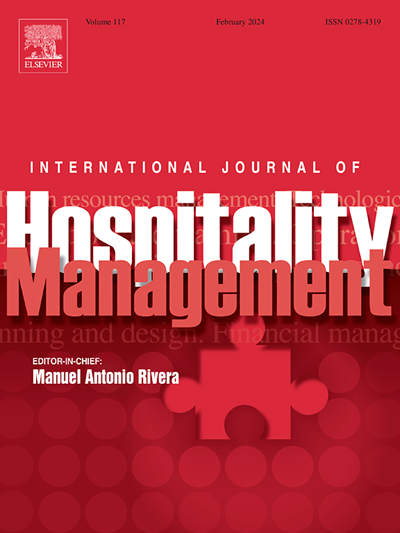How hospitality brands succeed: Evidence from brand-level analyses of hotel brands
IF 9.9
1区 管理学
Q1 HOSPITALITY, LEISURE, SPORT & TOURISM
International Journal of Hospitality Management
Pub Date : 2024-11-29
DOI:10.1016/j.ijhm.2024.104020
引用次数: 0
Abstract
Marketing involves a competition between brands, yet very little hospitality marketing research uses brands as the unit-of-analysis. The current paper fills this need by examining the relationships among hotel brands’ quality/price tier, number of hotels, building size (average number of rooms per hotel), average customer satisfaction ratings, popularity, fame, penetration, average purchase frequency, and annual room revenue. The results indicated that hotel brand popularity and total sales volume were greater among brands in the middle quality-price tier and those with more and larger hotels. After controlling for quality/price tier, greater customer-satisfaction ratings were positively related to brands’ sales per room, but not to brand popularity or total sales volume. These findings suggest that marketing success is primarily a function of brands’ mental and physical availabilities and that unusually high or low experience quality given a brand’s quality/price tier is attributed to, and benefits, the property rather than the brand.
酒店品牌如何成功:来自酒店品牌品牌层面分析的证据
营销涉及品牌之间的竞争,但很少有酒店营销研究使用品牌作为分析单位。本文通过考察酒店品牌的质量/价格等级、酒店数量、建筑规模(每间酒店的平均客房数量)、平均客户满意度评分、知名度、知名度、渗透率、平均购买频率和年度客房收入之间的关系,填补了这一需求。结果表明,酒店品牌知名度和总销售额在中等质量-价格层和拥有更多、更大酒店的品牌中更高。在控制了质量/价格等级之后,更高的客户满意度评级与品牌每间客房的销售额呈正相关,但与品牌知名度或总销售额无关。这些发现表明,市场营销的成功主要取决于品牌的精神和物质上的可用性,而品牌的质量/价格水平所带来的异常高或低的体验质量归因于财产和利益,而不是品牌。
本文章由计算机程序翻译,如有差异,请以英文原文为准。
求助全文
约1分钟内获得全文
求助全文
来源期刊

International Journal of Hospitality Management
HOSPITALITY, LEISURE, SPORT & TOURISM-
CiteScore
21.20
自引率
9.40%
发文量
218
审稿时长
85 days
期刊介绍:
The International Journal of Hospitality Management serves as a platform for discussing significant trends and advancements in various disciplines related to the hospitality industry. The publication covers a wide range of topics, including human resources management, consumer behavior and marketing, business forecasting and applied economics, operational management, strategic management, financial management, planning and design, information technology and e-commerce, training and development, technological developments, and national and international legislation.
In addition to covering these topics, the journal features research papers, state-of-the-art reviews, and analyses of business practices within the hospitality industry. It aims to provide readers with valuable insights and knowledge in order to advance research and improve practices in the field.
The journal is also indexed and abstracted in various databases, including the Journal of Travel Research, PIRA, Academic Journal Guide, Documentation Touristique, Leisure, Recreation and Tourism Abstracts, Lodging and Restaurant Index, Scopus, CIRET, and the Social Sciences Citation Index. This ensures that the journal's content is widely accessible and discoverable by researchers and practitioners in the hospitality field.
 求助内容:
求助内容: 应助结果提醒方式:
应助结果提醒方式:


